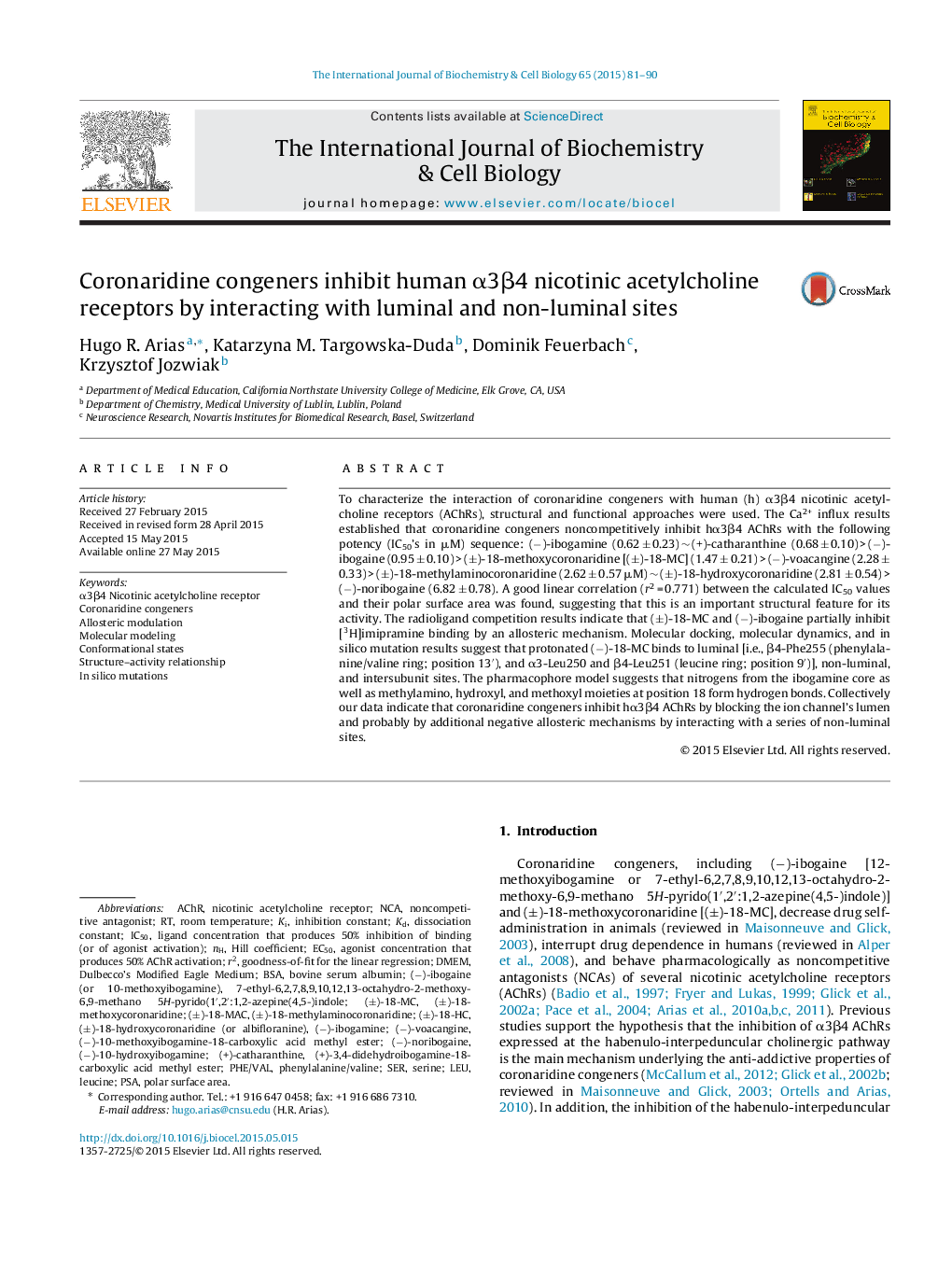| Article ID | Journal | Published Year | Pages | File Type |
|---|---|---|---|---|
| 1983475 | The International Journal of Biochemistry & Cell Biology | 2015 | 10 Pages |
Abstract
To characterize the interaction of coronaridine congeners with human (h) α3β4 nicotinic acetylcholine receptors (AChRs), structural and functional approaches were used. The Ca2+ influx results established that coronaridine congeners noncompetitively inhibit hα3β4 AChRs with the following potency (IC50's in μM) sequence: (â)-ibogamine (0.62 ± 0.23) â¼Â (+)-catharanthine (0.68 ± 0.10) > (â)-ibogaine (0.95 ± 0.10) > (±)-18-methoxycoronaridine [(±)-18-MC] (1.47 ± 0.21) > (â)-voacangine (2.28 ± 0.33) > (±)-18-methylaminocoronaridine (2.62 ± 0.57 μM) â¼Â (±)-18-hydroxycoronaridine (2.81 ± 0.54) > (â)-noribogaine (6.82 ± 0.78). A good linear correlation (r2 = 0.771) between the calculated IC50 values and their polar surface area was found, suggesting that this is an important structural feature for its activity. The radioligand competition results indicate that (±)-18-MC and (â)-ibogaine partially inhibit [3H]imipramine binding by an allosteric mechanism. Molecular docking, molecular dynamics, and in silico mutation results suggest that protonated (â)-18-MC binds to luminal [i.e., β4-Phe255 (phenylalanine/valine ring; position 13â²), and α3-Leu250 and β4-Leu251 (leucine ring; position 9â²)], non-luminal, and intersubunit sites. The pharmacophore model suggests that nitrogens from the ibogamine core as well as methylamino, hydroxyl, and methoxyl moieties at position 18 form hydrogen bonds. Collectively our data indicate that coronaridine congeners inhibit hα3β4 AChRs by blocking the ion channel's lumen and probably by additional negative allosteric mechanisms by interacting with a series of non-luminal sites.
Keywords
LEUagonist concentration that produces 50% AChR activationNCAAChREC50IC50PSADMEMBSADulbecco's modified Eagle Mediumbovine serum albuminNoncompetitive antagonistSERDissociation constantRoom temperatureConformational statesStructure–activity relationshipSerineHill coefficientLeucineMolecular modelingAllosteric modulationPolar surface areainhibition constantnicotinic acetylcholine receptor
Related Topics
Life Sciences
Biochemistry, Genetics and Molecular Biology
Biochemistry
Authors
Hugo R. Arias, Katarzyna M. Targowska-Duda, Dominik Feuerbach, Krzysztof Jozwiak,
